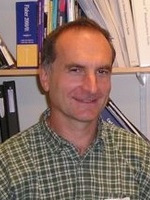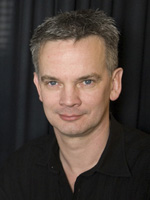


T-2: Optical microscopy and deconvolution
Wednesday, April 14, 08:30 - 12:15
Presented by
Presented by Hans van der Voort (Scientific Volume Imaging, The Netherlands), Erik Manders (University of Amsterdam, The Netherlands), and Mark Hink (University of Amsterdam, The Netherlands)
Description
Fluorescence microscopy has become a very important instrument for numerous biological and biomedical applications. Green Fluorescent Proteins (GFP) allow us to observe protein dynamics and interactions in living cells and tissue. However, there are two major effects that limit imaging with a light microscope: 1) the light microscope has a limited resolution and 2) fluorophore emit a limited number of photons leading to noisy images.
In this tutorial we will review the principles of microscopic image formation and how they give rise to specific blurring properties of the microscopic Point Spread Function (PSF) and photon noise. We will discuss two technologies that reduce these limiting effects dramatically: Deconvolution techniques and Super-Resolution techniques.
Part I: Deconvolution
While image enhancement techniques can effectively remove noise, they can only do that by sacrificing resolution. For many applications, especially those concerning cells or cellular components this is unacceptable. In contrast, deconvolution techniques allow resolution gain and reduce noise at the same time, and do so for a large variety of images, from 2D widefield to 3D or 3D-time multi photon series.
Part II: Super-Resolution
Due to diffraction of light the resolution of the confocal microscope is limited as described by Abbes Law. In the last decade a few techniques have been developed that break this law. We will discuss the available techniques and we will focus on one specific technology, photo-activated localization microscopy (PALM), which is based on imaging of single fluorescent molecules.